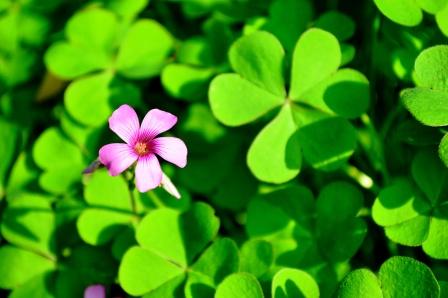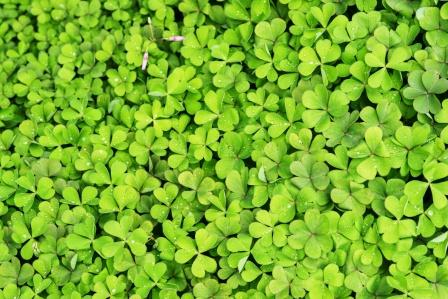Changeri – Oxalis Corniculata – Indian Sorrel – Full Ayurveda Details
Changeri is an Ayurvedic herb with a sour taste. It is used in digestive disorders. Its botanical name is Oxalis corniculata, belonging to the Oxalidaceae family (Charngeri kula).
Table of Contents
Vernacular Names
English name – Indian Sorrel
Hindi name – Teen Pattia (because of the three leaflet structure of the leaves)
Tamil name – Paliakiri


Medicinal properties, indications
Rasa – Amla (sour), Kashaya (Astringent)
Guna (qualities) – Laghu (light to digest), Rooksha (dryness)
Vipaka – taste conversion after digestion – amla (sour)
Veerya (Potency) – Ushna – Hot
Action on dosha – Kapha vata samaka
Action – Ruchya, Dipana, Atisarahara
Pharmacological Action – Anti – inflammatory, analgesic, Antipyretic, Anti bacterial, Hypotensive
As per mentioned in Bhojana Kutuhalam twelfth chapter, changeri is very hot in potency, pungent in taste, it is appetizing and imparts taste, stimulates digestive fire and treats kapha and vata related disorders, hemorrhoids, grahani and diarrhea.

Ushnaveerya -Hot in potency
Grahini – absorbent.
Kapha maarute – Useful in kapha and Vata disorders
Grahani – Useful in malabsorption syndrome, sprue
Arsha – Useful in hemorrhoids
Kinchit Kashaya – Slightly astringent
Agnideepani – Improves digestion power
Pittakrut – Increases Pitta
Saamavate Hita – Useful in rheumatoid arthritis
Kaphe hita – Useful in Kapha disorders.
Laghu (light to digest)
Atisara Hanti – useful in diarrhea
Kushtanashani – useful in skin diseases.
Charaka Sutrasthana 27
Changeri( Rumev dentaus / Oxalis corniculata) is hot in potency
Ushna – hot
Grahi – absorbent
Useful in disorders of Kapha and Vata imbalance
Grahani – Malabsorption syndrome, Irritable Bowel Syndrome
Arsha – Hemorrhoids
Usage in Grahani
Because of Changeri’s sour taste, it improves digestion strength.
Because of its Grahi nature, it acts as an absorbent and helps in improving formation of stools and it improves stool bulk.
Part used, chemical constituents
Part used – leaf, fruit, whole plant
Dosage – Juice – 10- 20 ml
Powder – 3 – 6 g
Major chemical constituents – Malic acid, tartaric acid, citric acid, , isovitexin
Morphology
Creeping perennial herb
Leaves – Alternate, trifoliate with long petiole.
Flowers – Yellow coloured
Fruit – Capsule with many black seeds
Ayurvedic medicines
Important Ayurvedic medicines with Changeri –
Changeri Ghrita – for the treatment of bloating, malabsorption syndrome, diarrhea etc
Jivantyadi Ghrita – for the treatment of the early stage of cataract.
Interaction with medicines, supplements
Can this be used while taking Homeopathic medicine?
Yes. This product does not react with homeopathic medicine.
Can this medicine be continued while taking supplements like multivitamin tablets, Omega 3 fatty acids etc?
Yes. Generally, this product goes well with most dietary supplements. However, if you are taking more than one product per day, please consult your doctor for an opinion.
With western
medicines
Seek your
doctor’s advice if you are taking this product along with other western
(allopathic / modern) medicines. Some Ayurvedic herbs can interact with modern
medicine.
If both Ayurvedic and allopathic medicines are advised together, then it is
best to take Allopathic medicine first, wait for 30 minutes and then take the
Ayurvedic medicine.
Sanskrit Synonyms
Kshudra amlika, Lonika, Amlalonika, Lola, Chatushparni,
Dantasatha – Induce tingling sensation in teeth
Amlapatrika – Its leaves have sour taste
Sunishannachada – Leaves resembles leaves of Sunishannaka
Sthanika Karma (Systemic Action)
External Application – Possess Analgesic and anti inflammatory properties. It shows a scraping effect on the dhatus. Indicated in headache, inflammatory wounds etc. Because of its scraping action it can be used in eye disorders like Pterygium (Armam), inflammatory diseases of sclera etc..
Internal administration-
Nervous system – Its juice is indicated in intoxication, helps to regain consciousness.
Digestive System – Absorbent and Carminative, digestant, Liver stimulant. Indicated in Anorexia, Loss of appetite, Malabsorption syndrome, Hemorrhoids, Rectal prolapse etc.Circulatory System – It protects the heart and exhibits styptic action, and is useful in the treatment of bleeding disorders. Its astringent taste enables it to effectively constrict small blood vessels.
Satmikarana –Anti poisonous action. It is recommended for use in cases of Dattura poisoning.
Tapakrama – Cold to touch, relieve burning sensation, indicated in quaternary type of fever (Chaturthaka jvara)










